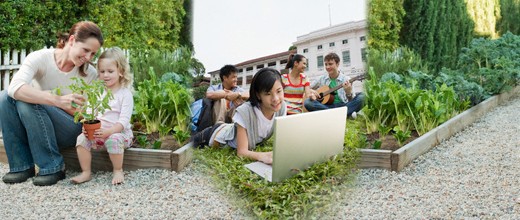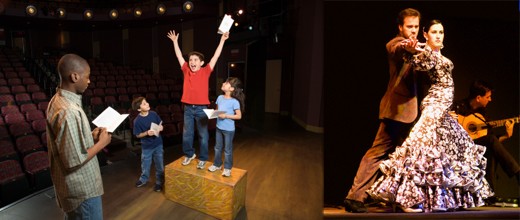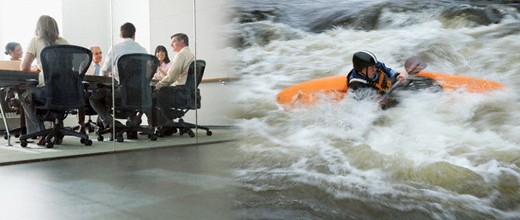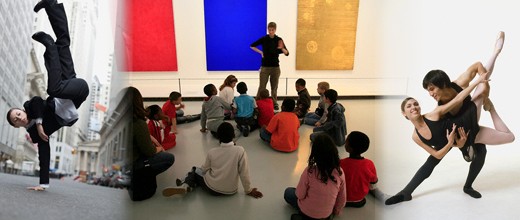Website sections:
Current section's content:
- You Can Manage and Program Creativity
- Creative Abilities and Creative Thinking Skills Management
- Briefly About CreativityModel Method Usage
- CreativityModel Method Usage Opportunities and End-User License Agreement
- Current Version of CreativityModel Method
- CreativityModel Method Abstract
- CreativityModel Method Version Changes
- CreativityModel Method Glossary
- Explanation of the Method's Component Parts and How the Component Parts Interact
- Explanation of How the Method's User Achieves Results
- CreativityModel Method - Generate Dots, Connect the Dots
- CreativityModel Method Usage Areas
- The Artist in You
- Growth of the Artist in You
- The Result Getter in You
- Applying the Result Getter in You
- About Choice Supported Creativity Usage
- The Problematic Side of Business Creativity
- Creativity Management and Business Creativity
- Sales CRM Software Development Example
- Why Does Creativity Management Matter and What Can You Do About This?
- Goal Oriented Creativity Management and CreativityModel Method
- Goal Oriented Creativity Management and Your Personal and Professional Life
- Teenager, Version 1 - Confusion
- Teenager, Version 2 - Career Development and Life Management
- Managers, Version 1 - Zigzagging Business Development
- Managers, Version 2 - Innovation Management and New Product and Service Development
- The President, Version 1 - Some of It Did Happen
- The President, Version 2 - Self-Expression, Conflict Resolution, Creativity and Leadership
- CreativityModel Method Development Background
- Further Development of CreativityModel Method




















About Choice Supported Creativity Usage
Contents
- You Can Mix and Match, But First You Should Choose How To Proceed
- Choice Supported Creative Approach - Choices, Characteristics and Actions Taken
You Can Mix and Match, But First You Should Choose How To Proceed
This article contains a brief overview of the processes that are commonly associated with artistic creativity and are called here choice supported creativity.
Let's say, that you are working on something.
In your opinion, for the particular project, which of the following two alternatives is more important: (1) artistic or imaginative qualities of the outcome, or (2) achieving specific goals with the outcome?
It is more likely that you can achieve good results, if you choose one of these alternatives for the development of the project's structure.
If you need to achieve specific goals, go with the second option and use the Goal Oriented Creative Approach principles.
If not, and artistic or imaginative qualities of the outcome are important to you, use the Choice Supported Creative Approach principles that are described below.
You can aim for a very balanced outcome between these two alternatives, but that can be rather difficult to pull off. You can certainly mix the usage of goal oriented creativity and choice supported creativity throughout the project development, but preferably, one of the two should be dominant.
For example, innovation as a process of creating new and marketable products, services, methods or business models can greatly benefit from usage of choice supported creativity when something new is invented. This means that innovation management as a business process can use choice supported creativity in a targeted way throughout the project. However, the overall project structure should be based on Goal Oriented Creative Approach principles. This is so because, as a business process, innovation management usually works the best when goals are set and achieved. (In most instances these goals are related to understanding and meeting target market's needs and wants profitably. This applies equally well when end-user innovation is concerned, where an innovation is developed for personal or in-house consumption.)
Similarly, the overall project structure should be based on goal oriented creativity principles when software development for business customers and countless other business needs focused projects are concerned.
So, being good at using Choice Supported Creative Approach principles is useful in business and other types of goal oriented environments as well.
On the other hand, using the Choice Supported Creative Approach principles for development of the entire project's structure is helpful when you work on projects, where higher value is put on artistic or otherwise imaginative qualities of the outcome than on achieving specific goals, and where you can proceed by generating and evaluating different options without having to meet pre-determined objectives.
Choice Supported Creative Approach - Choices, Characteristics and Actions Taken
Choice Supported Creative Approach is named "choice supported," because project element generating and selecting processes are supported by individual choices.
It could also have been named Characteristics Based Creative Approach, because characteristics of the elements that are involved have an important role in the described processes - and so do actions that can be taken and are related to the elements. However, the role of the individual choices is even more important.
Here, of course, personal interpretation, expertise, experience and abilities can make a difference.
Choice Supported Creative Approach is largely based on generating and evaluating different sets of elements, often involves usage of trial-and-error methods, and offers a great deal of flexibility.
You can start a project by identifying first either its theme, structure, or some components. Even element fragments will do, if you can develop them further later.
Do element pooling, that is, create alternative sets of elements, develop further different elements as needed, create different combinations of the elements, choose between the alternatives, and finally discard everything but the needed elements.
Initially created elements do not necessarily have to be closely related to each other. CreativityModel Method describes three project development stages, and during the second and third stage you may want to relate the elements through the project's theme and structure. However, how closely interrelated the outcome will be, depends on the choices that you make.
A project, that has a choice supported structure can, but doesn't necessarily have to start out with having a theme. Theme can be attributed to a project based on either partial or full outcome. Further, project's theme can be changed.
It is advisable to establish project's structure after establishing its theme, and thereafter work on the components. However, this is only one way to develop projects further. Further, this, a more reliable way to get results using the Choice Supported Creative Approach, also tends to render the results more predictable. The latter may, or may not be what you want.
A project, that is built using choice supported creativity, may not even have an explicitly identified theme or structure. (Some abstract artworks are examples of such projects.) People, who view or review the project, may establish their own individual opinions on such project's theme and structure.
Of course, in such instances the individual interpretations may vary. So, if you want to say something more specific with your work, it should have a theme, and its structure and content should explicitly represent that theme.
If your project should have a theme, it is a good idea to establish the project's theme during the initial development steps. If you change project's theme later, you will have to do more work, because you will have to make sure that the project's structure and all the components are in accordance with the new theme.
Develop components so, that they are linked to each other. You can generate components and link them through their characteristics. Beyond that, what you link and why, is up to you to decide. If your project has explicitly identified theme and structure, then the structure and the components in it should be in accordance with the project's theme.
Throughout a project that has a primarily choice supported structure, you can also use the Goal Oriented Creative Approach in parts of the project where you need to achieve specific objectives. However, when you do so, you want to make sure that the outcome is still coherently related to the project's theme, and the structural parts and components are coherently related to each other.
The key characteristics that make the individual creative development processes results unique are related to the choices that you make. The elements that you choose and use in the final outcome of the project, and the ways these elements are connected, make the individual creative development processes results unique and can make these results appealing to others.

